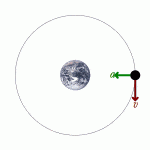Types Of Soil Sand
There are different types of soil sand found in different soil environments. Some are found in wet lands while some are found in dry lands. However, most of the soils found on the earth contains some portions of clay, silt, and sand. These three basic soil types determine the types of soil sand that will be inherent in a particular region. The soil is referred to as sandy soil when it contains more sand than any other ingredients. But when the soil has very small amount of sand, it is known as clay soil or silt. Below are the different types of soil sand depending on the type of environment from which the soil is found.
Dry Soil
These types of soil sand are found in dry soil found in desert temperatures of the world. They are the most common of all types of soil sand and lack nutrients for plants growth. The sand found in these areas is what is typically referred to as sandy soil. They are gritty in texture and have poor water holding quality. These types of soil sand are made of 1 to 10% clay, 0 to 10% silt, and 80 to 100% sand. They have low organic content and are lighter than other types of types soil sand. Their quick warming nature makes it ideal for the planting of seedlings. Parsnips, watermelon, carrots, root vegetables, and other plants that get water from underneath the sand can flourish in sandy sand.
Types of sand soil – River Soil
These are found in rivers and around coastal regions. Although these types of soil sand have a very high concentration of sand just like the soil in dry land, their mineral composition is quite different due to environmental factors. They are always moisturized with fresh water in the river and the nutrients from the river mixes with the sand during this period. This is why some trees such as longleaf pines, slash, and loblolly grow very well in this soil. Some pastures can equally flourish in a river soil.
Gardening Soil
These are the most nutritious of all types of soil sand. Organic matter can equally be added to this type of soil to improve the nutrients for gardening purpose. When organic matter is added, it helps to prevent the draining of nutrients from the soil and adds more nutrients for the survival and growth of foliage. When adding organic matter to this type of soil, there should be a higher concentration of organic matter than sand, and the mixture should have high water retention capacity. It should be mixed in the soil at a depth of about 3 inches below the earth’s surface. Organic materials like manure, compost material, shredded bark, and meat moss are recommended for such mixture. However, manures or compost will not be a good choice for some types of gardening soils. If the soil is close to the coast, it might be high in salt which makes it ideal to pick an organic matter that has low salt concentration.






